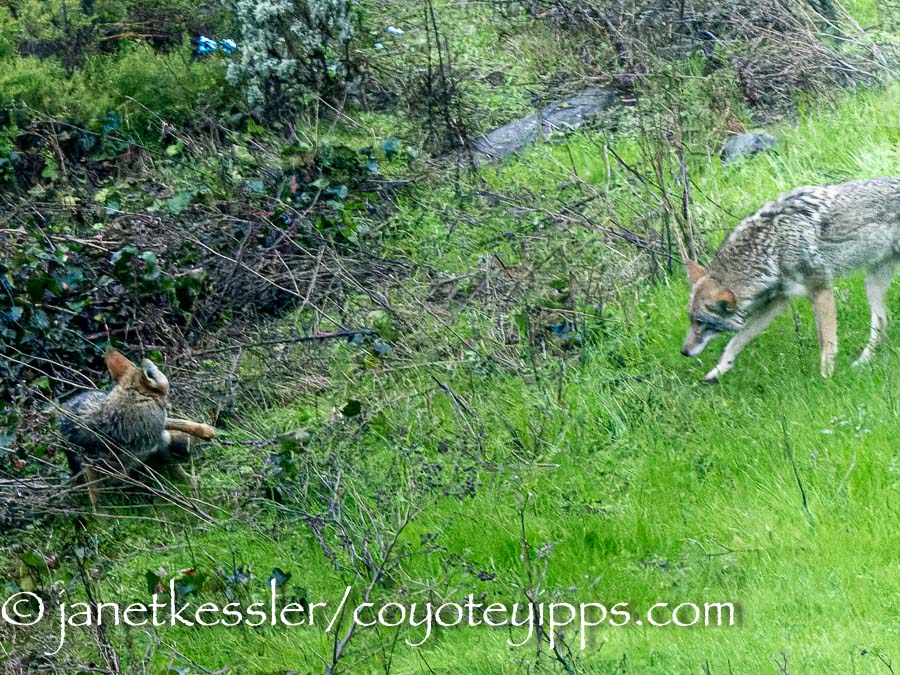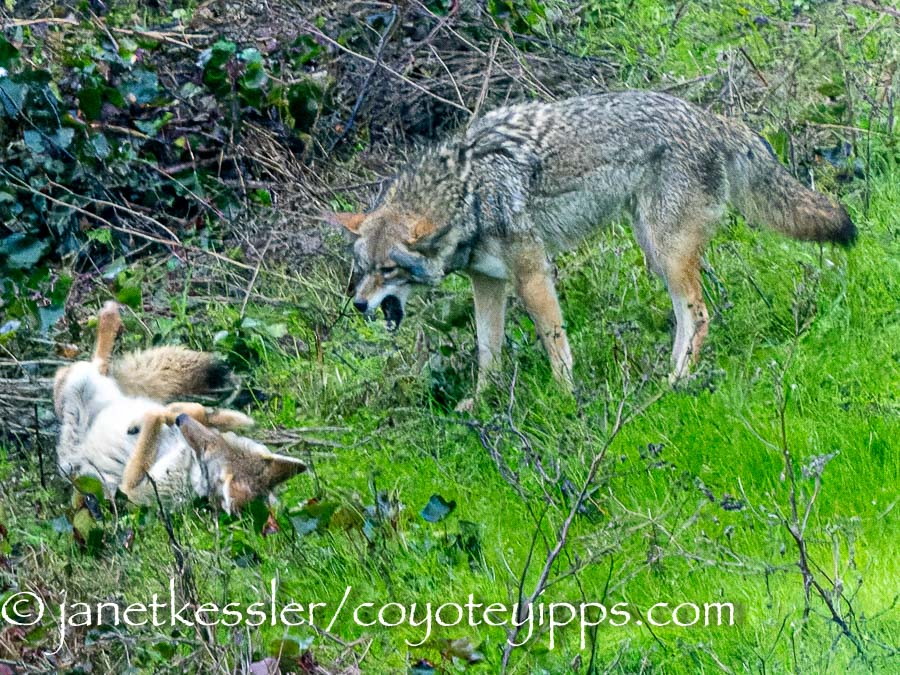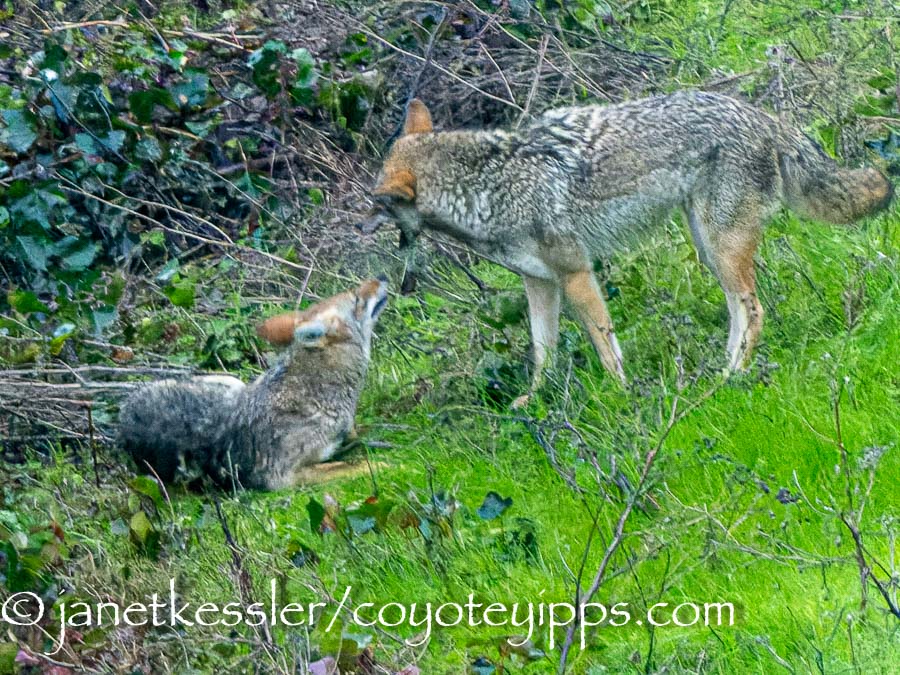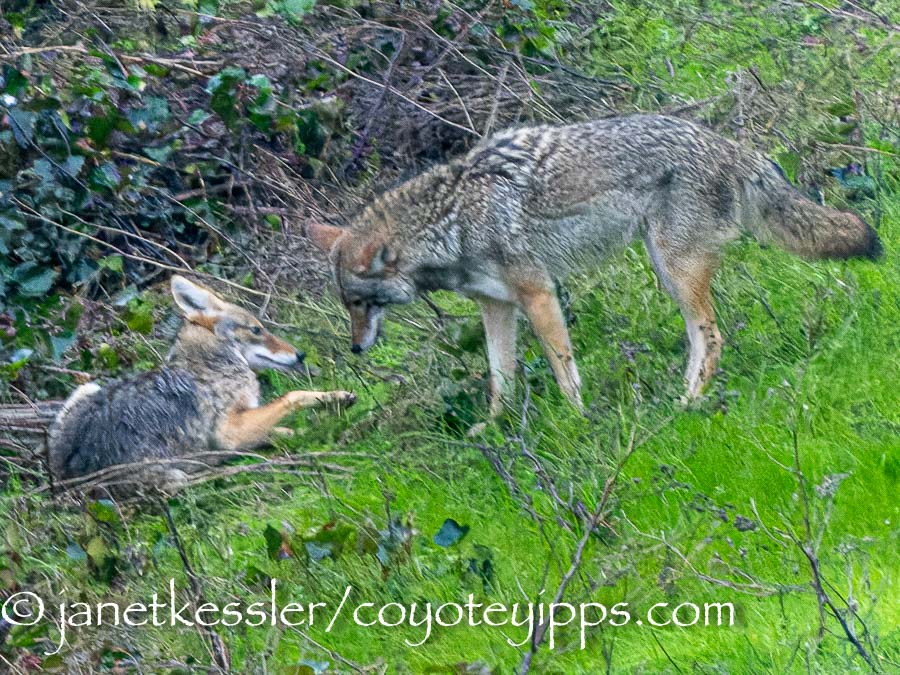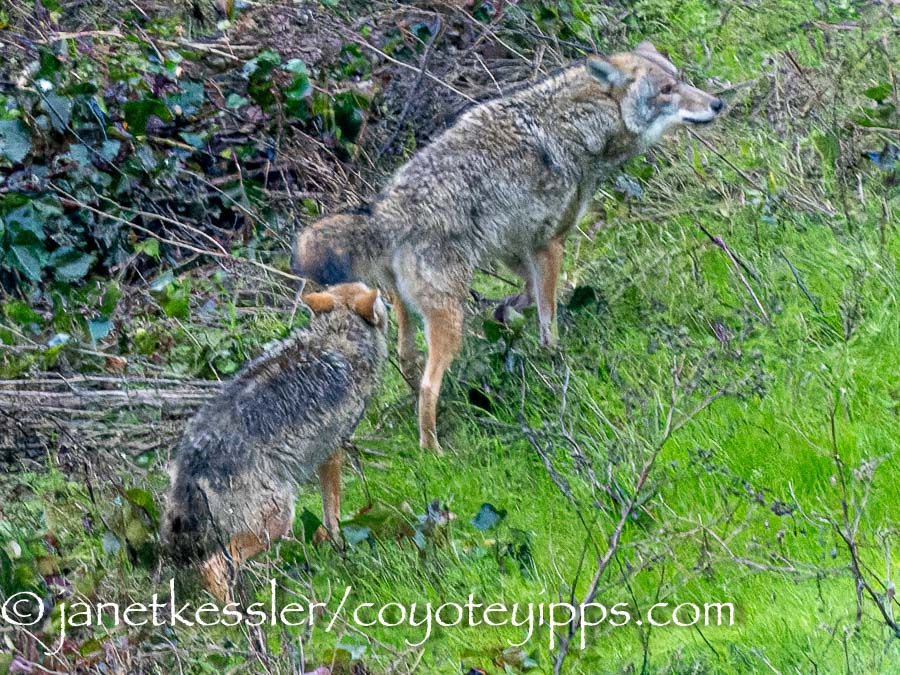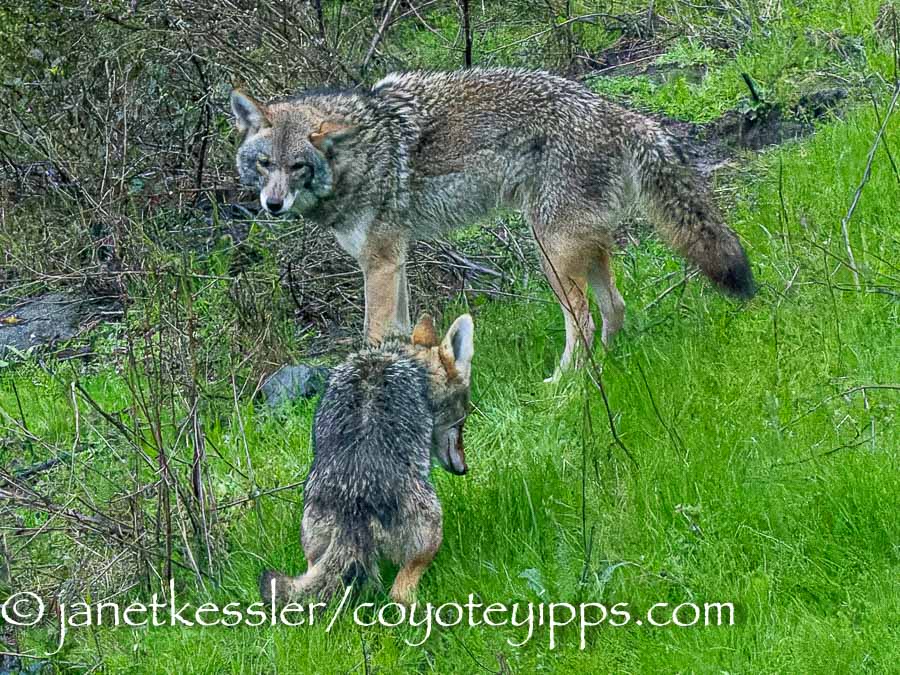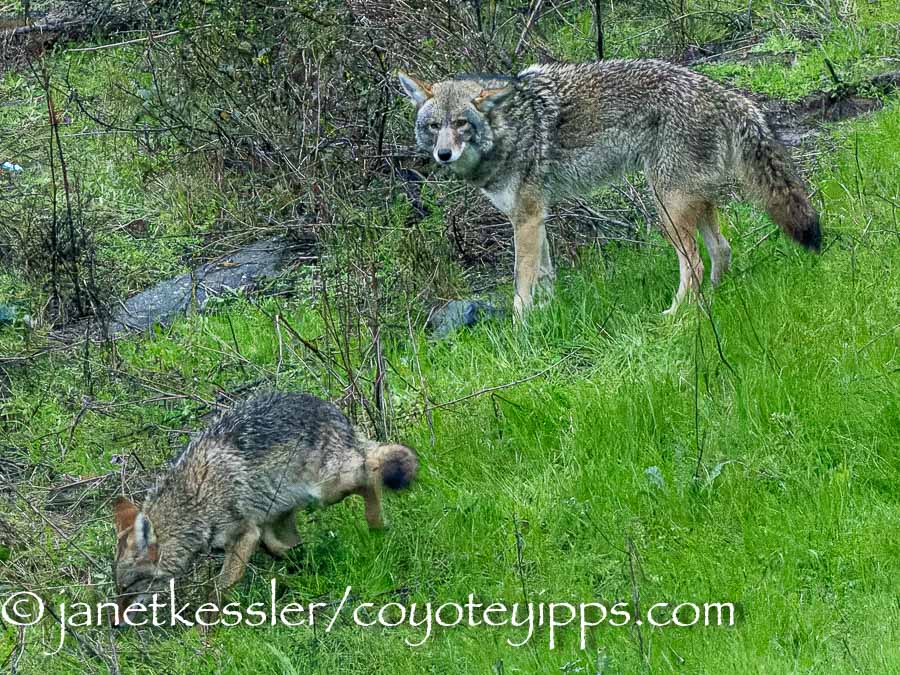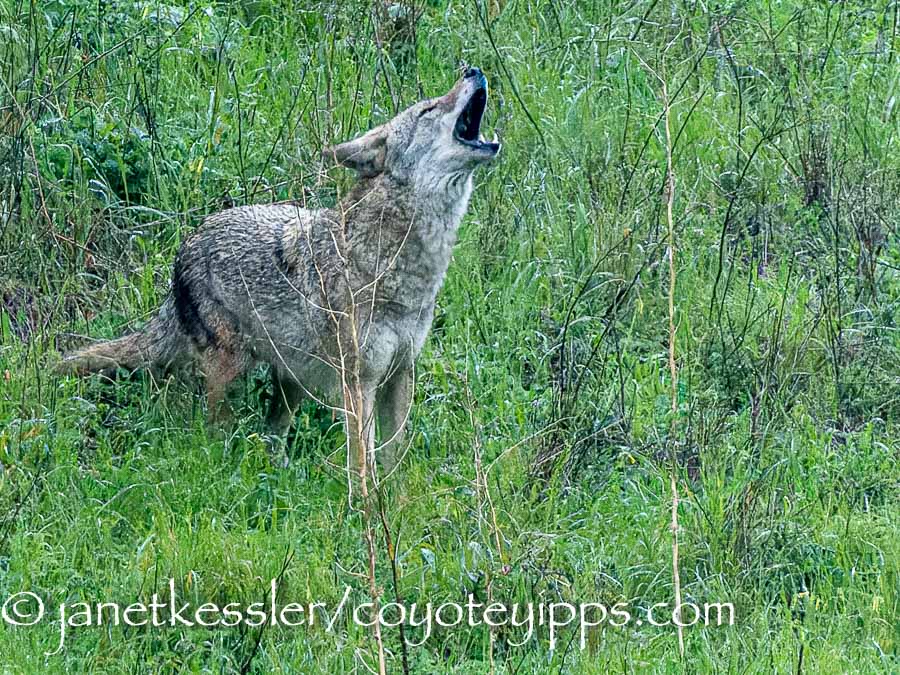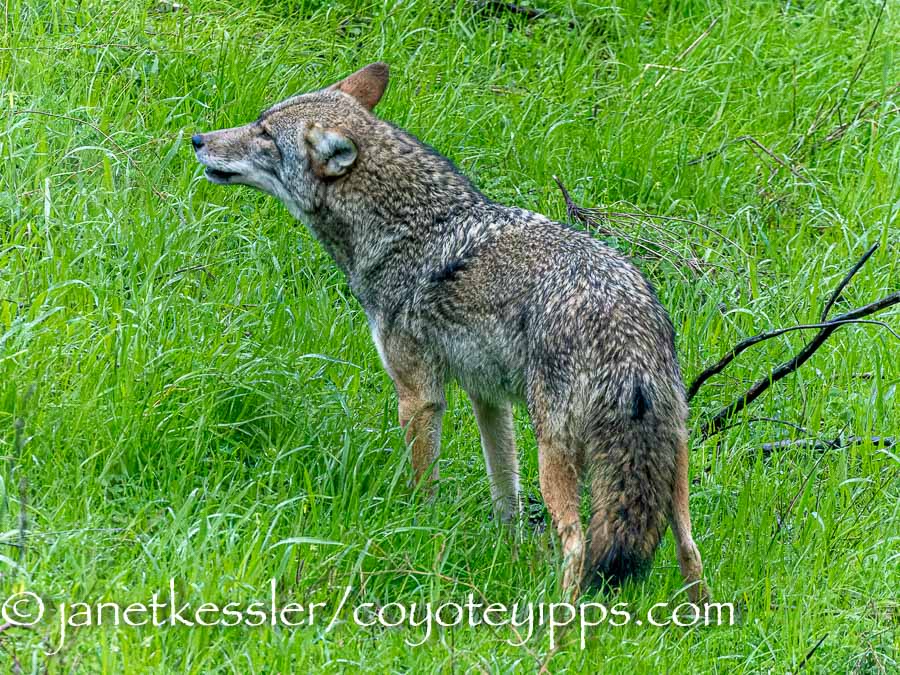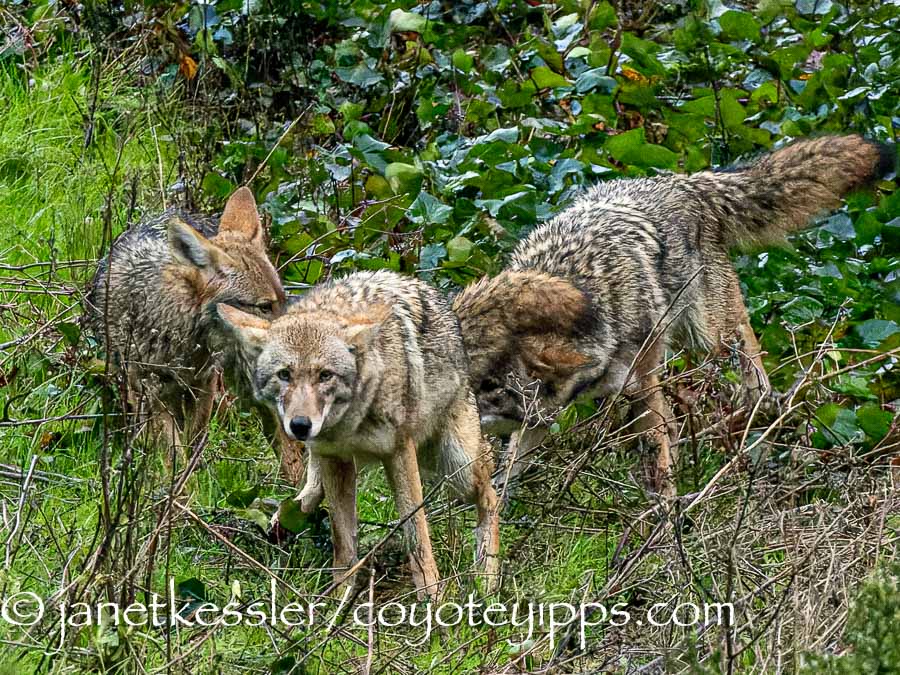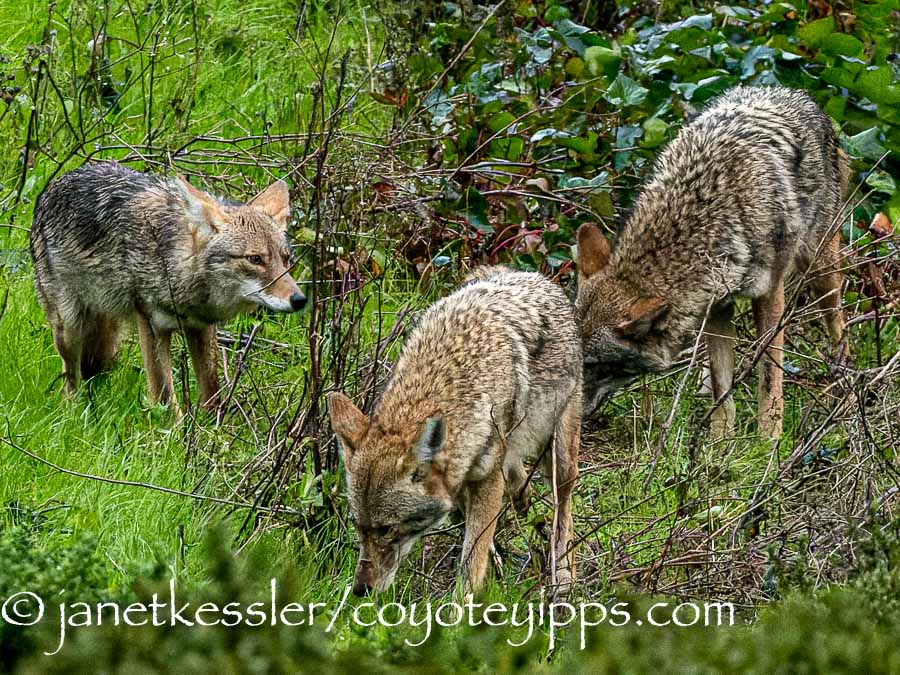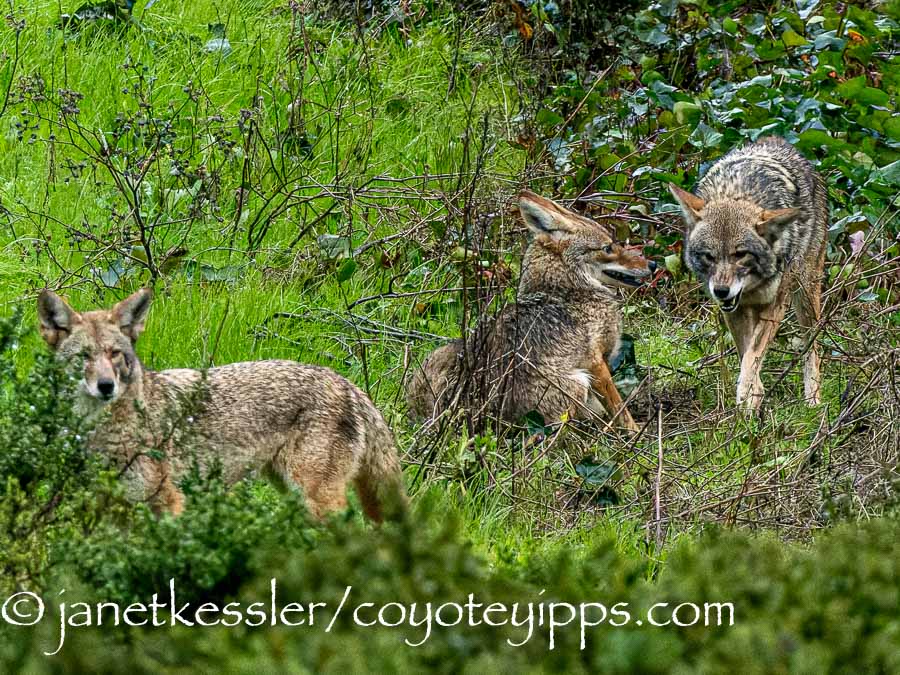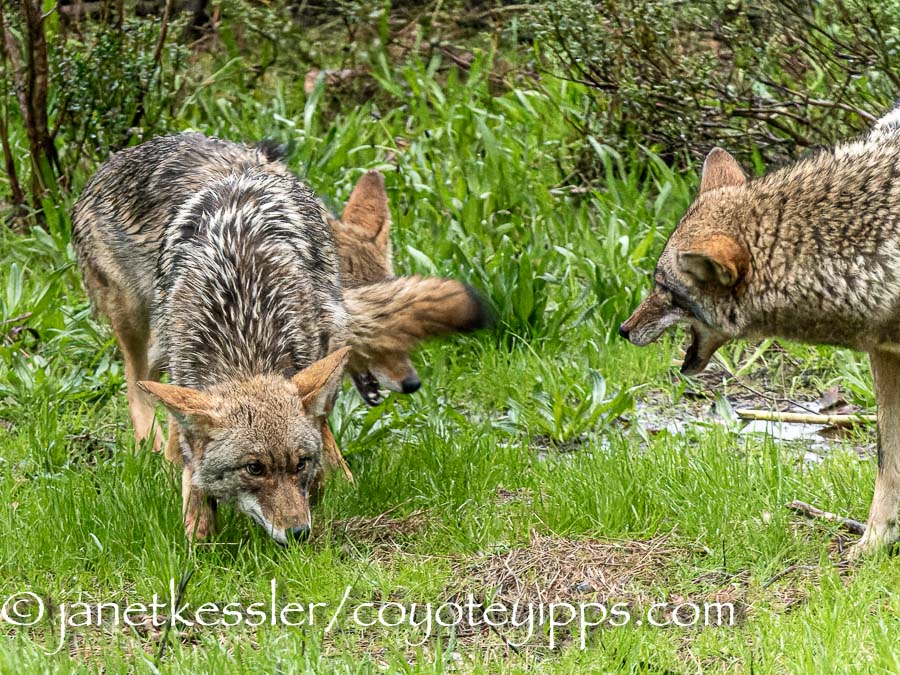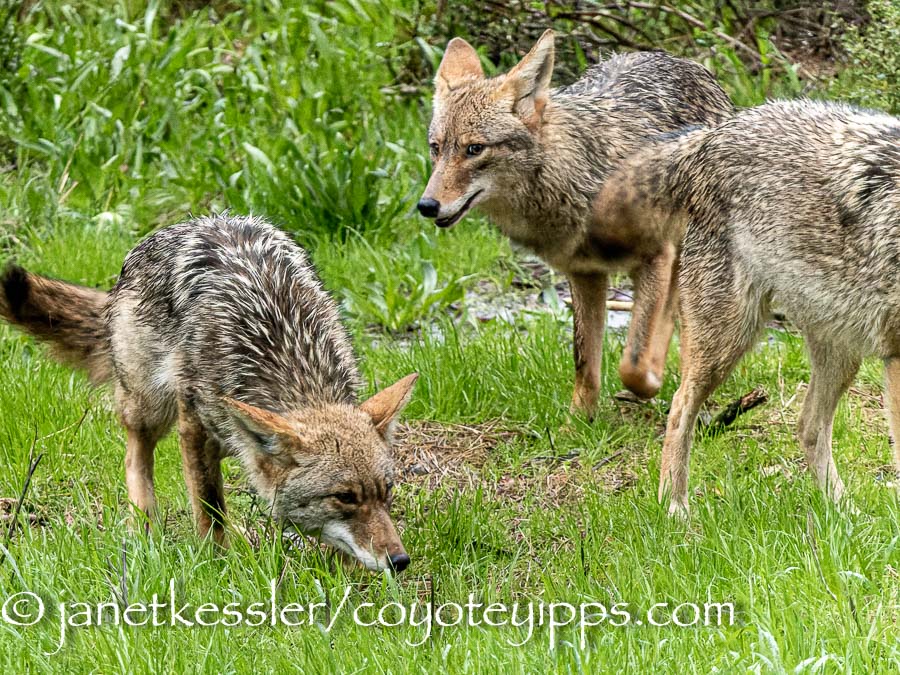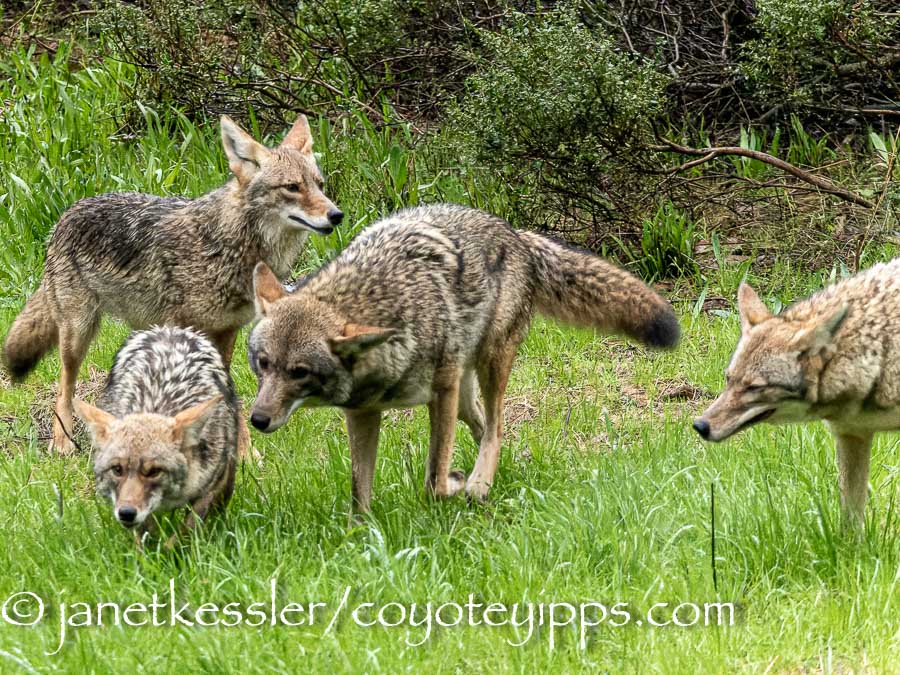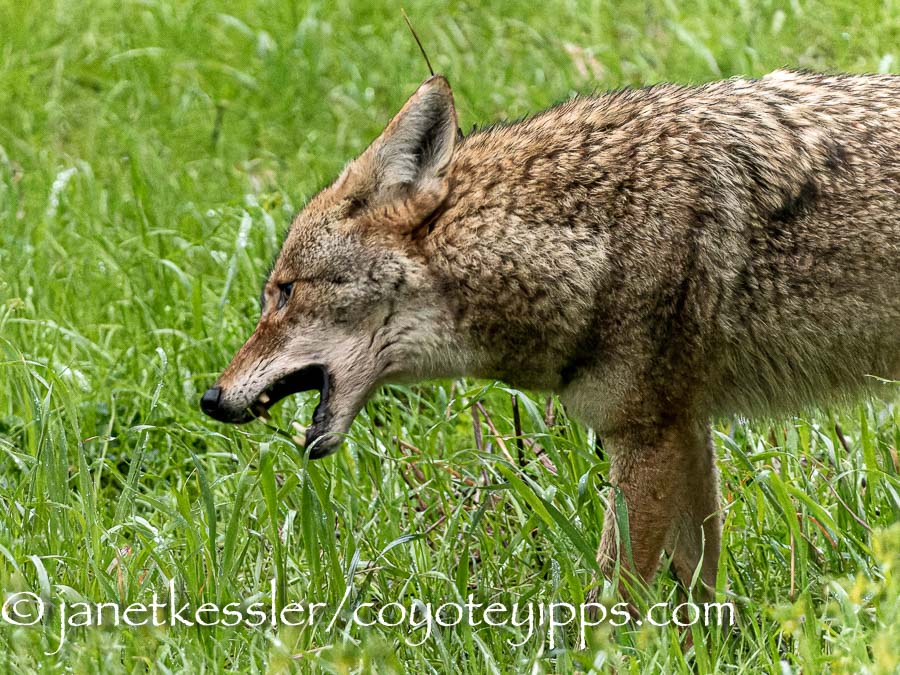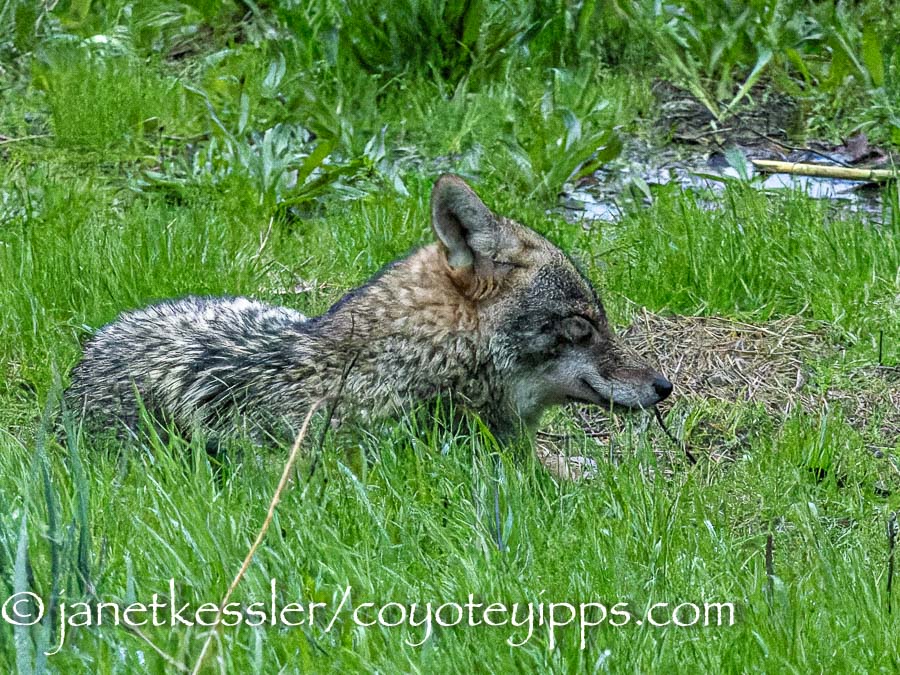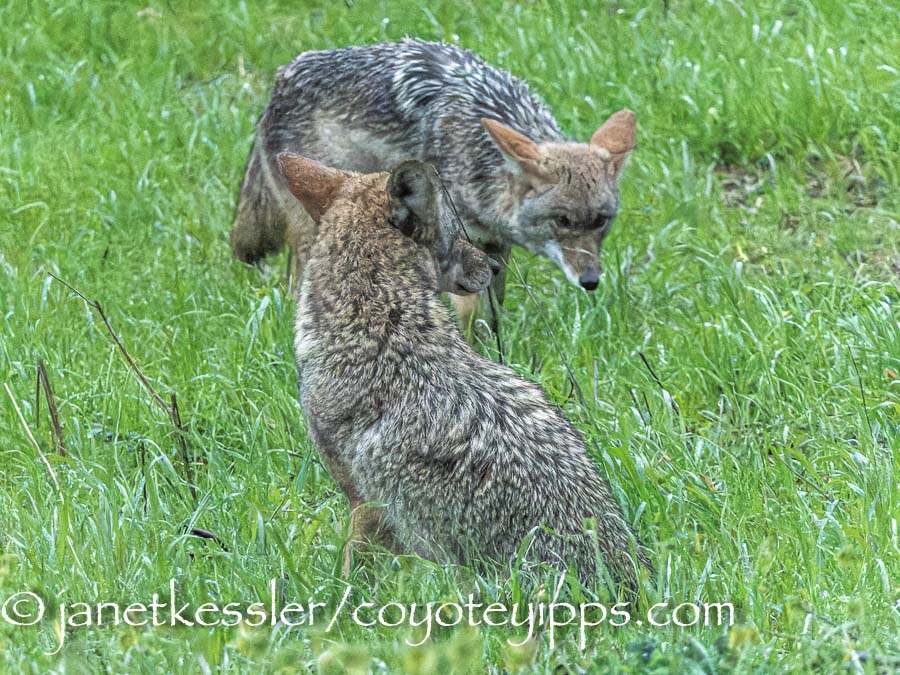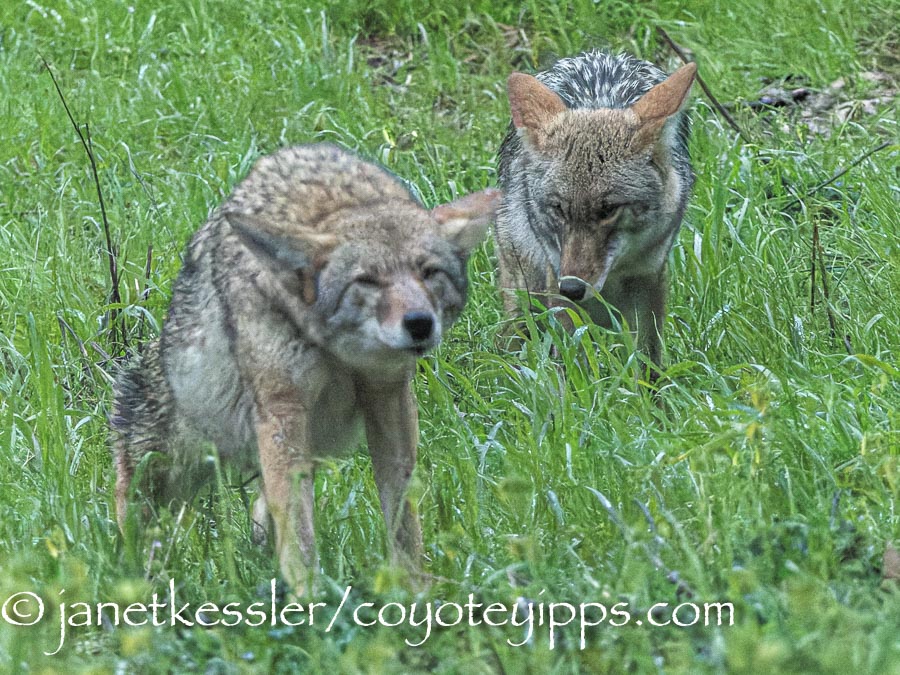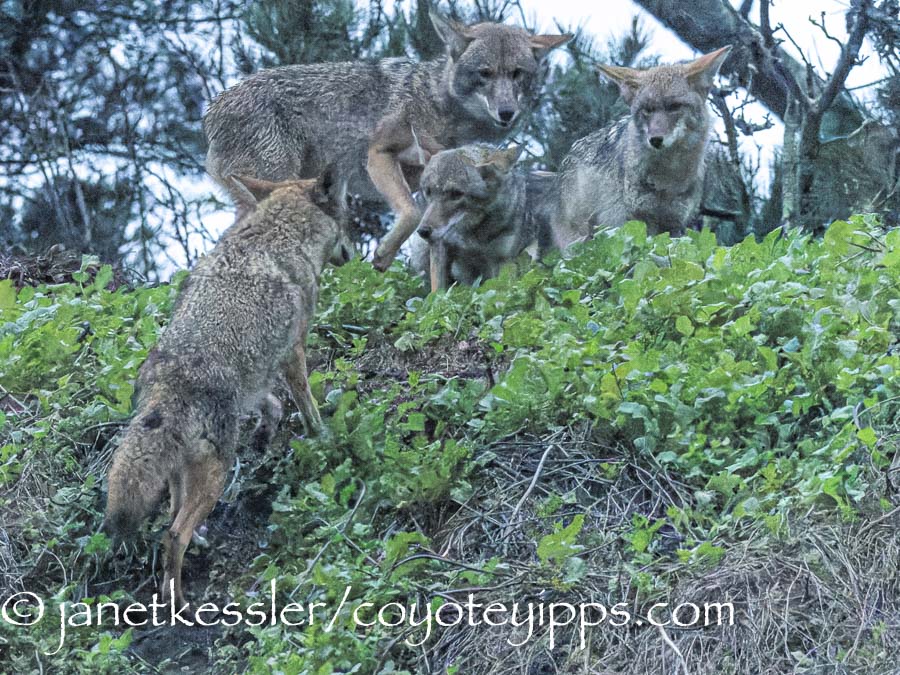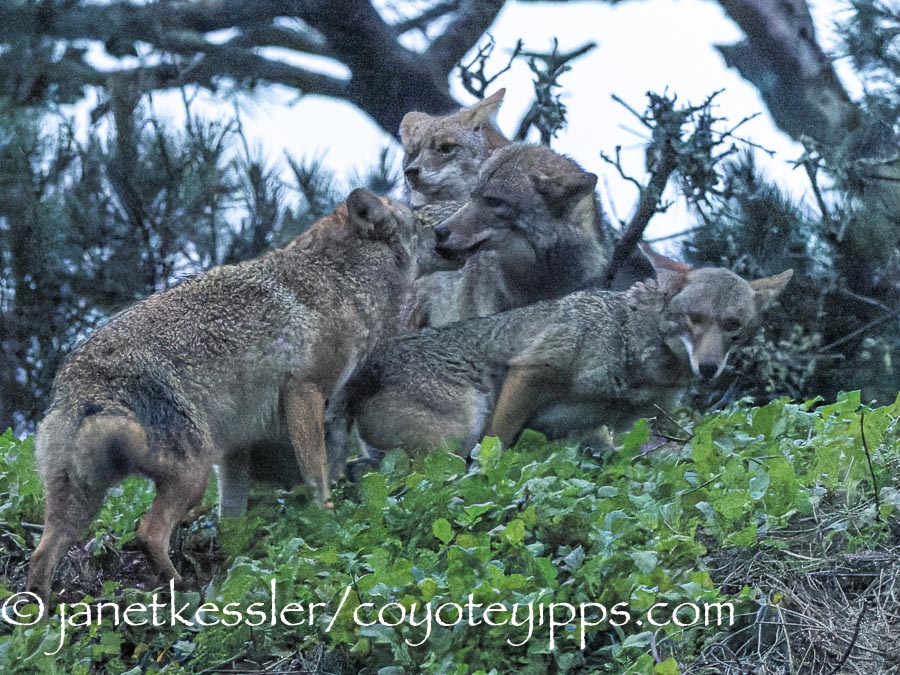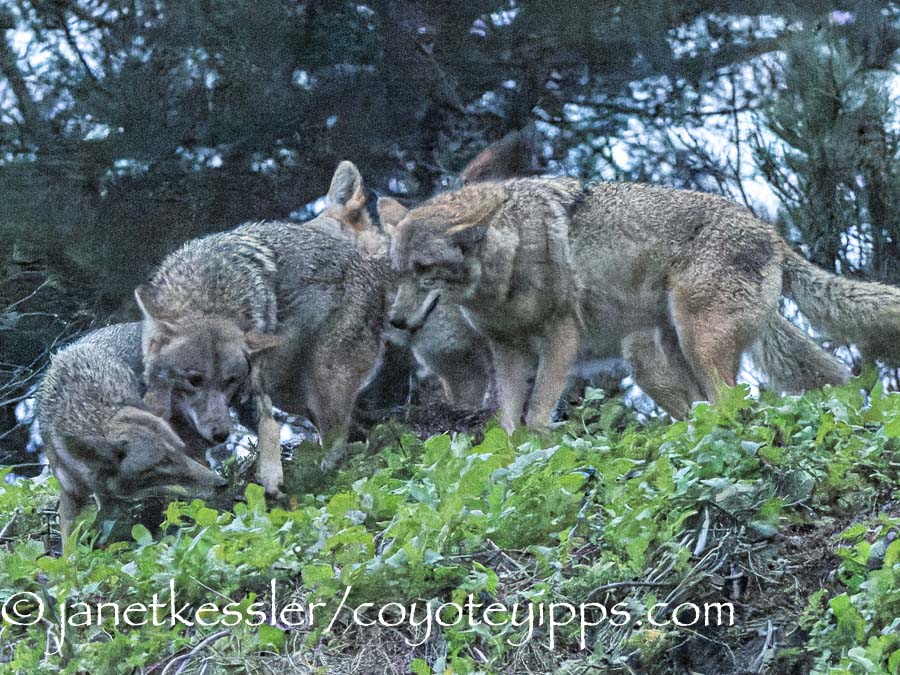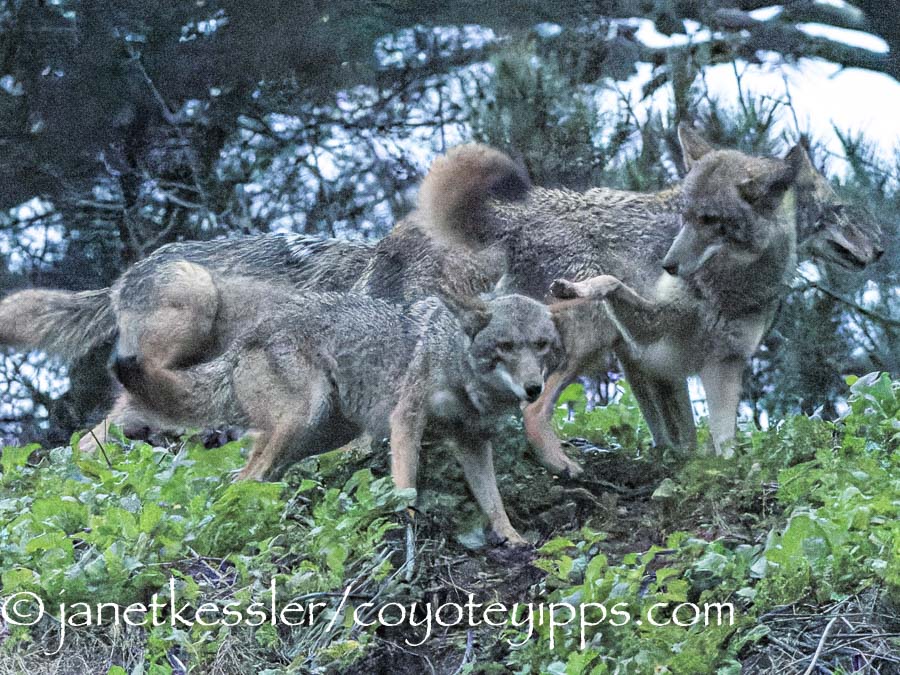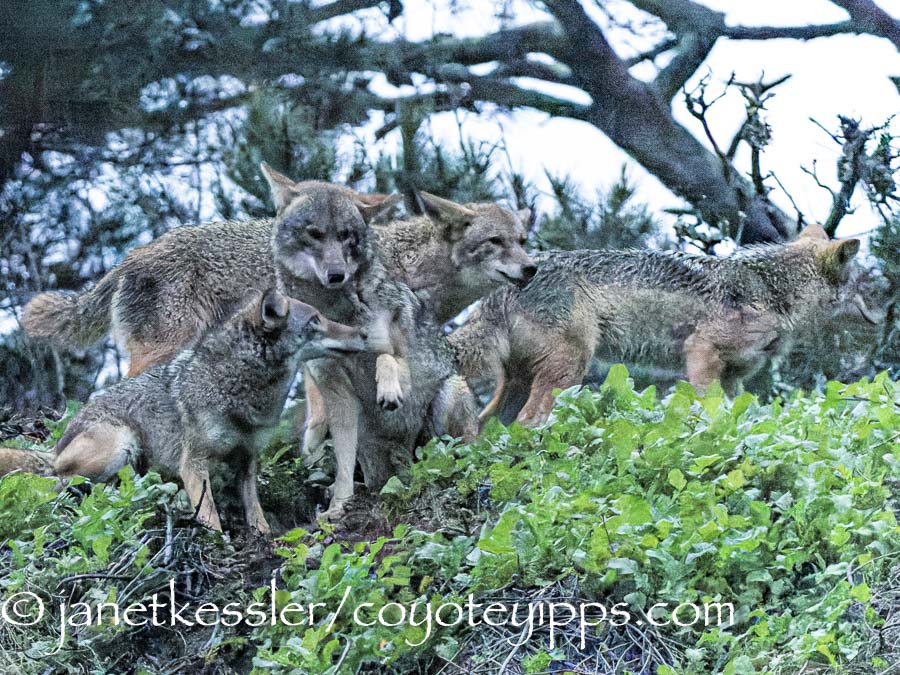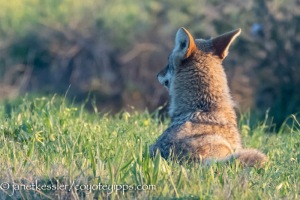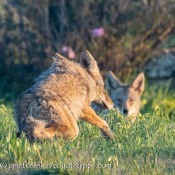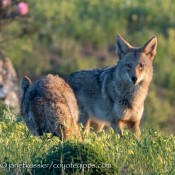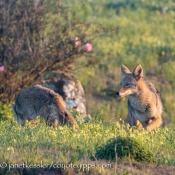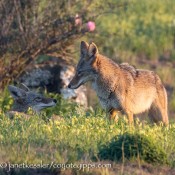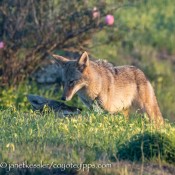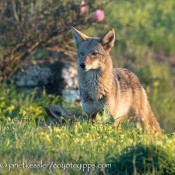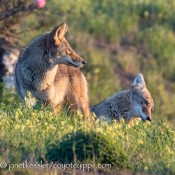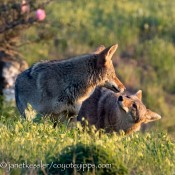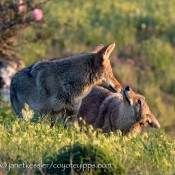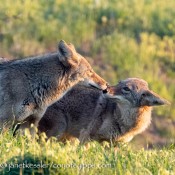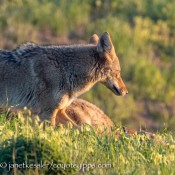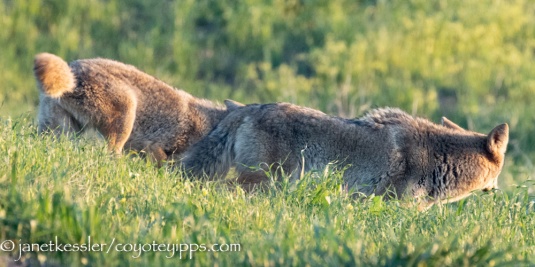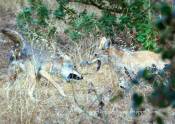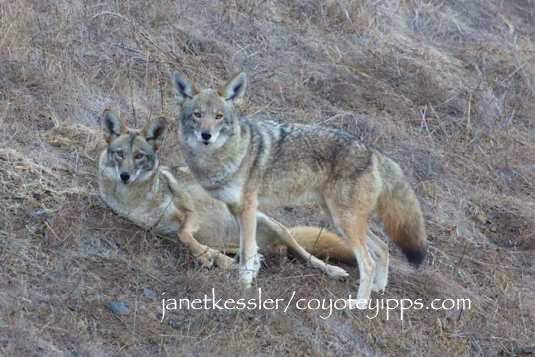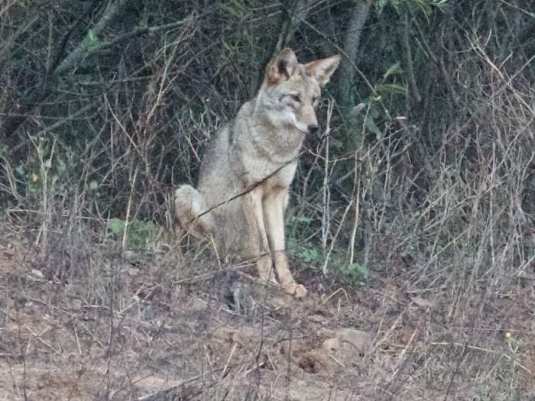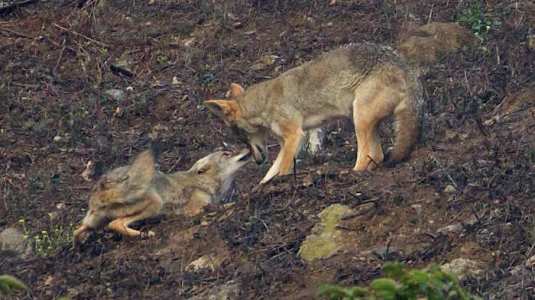
in happier times: male youngster resting with sibling
Imagine yourself as a young coyote in a perfect world. You live in an urban park which is ideal as a habitat — ideal beyond imagination: there are forests of trees with thick undergrowth for protection, a lake and streams with fresh water, open fields for hunting the overabundance of gophers and voles, there are snails and fruit to eat, there are dogs passing through which provide you with visual entertainment — even if some of them go after you, and you are protected by a city which encourages coexistence and does not allow trapping and killing of its urban wildlife. Pretty fantastic!
It’s true that nasty rumors and myths about coyotes spring up now and then which could result in harm to you, but most are short-lived and, more and more these days, the misinformation is brushed aside by a majority of park goers who have learned about coyote behavior and know that the sensationalist stories are all hype.
Family life, too, is ideal. You live with a father who has raised you and cared for you, and you have a sister who absolutely adores you as much as you adore her. You spend hours together, grooming each other or exuberantly playing all sorts of games you’ve invented for yourselves, such as chase and catch, tug of war, wrestling, steal the meal, jump over one another, hide and seek. Life is really a blast, and it’s been this way for the entire 16 months you’ve been alive to enjoy it, except the brief interlude immediately after Mom went missing — but you were young and that was soon forgotten because Dad was there to carry on for you. Things would have to be really, really bad for you even to consider such a thing as leaving.

happier times: joyfully playing with sibling

happier times: family outing
in happier times: joyfully playing with sibling, and a family outing
But life is not static: we all graduate to new levels and must go on at some point. Life is ever-changing and change is occurring now, not because of anything you’ve done, but because of who you are. You are a young male, and any territory only has room for one adult coyote male. Dad is feeling your coming-of-age and his instincts are becoming stronger, day by day, to push you out and away from his turf.
Recently, Dad has been charging at you, coming at you like a bullet to kick or nip you. You submit always and quickly, but that isn’t enough sometimes. More and more, you’ve been staying out of his way. You don’t join him and your sister so often, and you spend your time more and more alone. However, you have strong yearnings to be with your sister, to play with her, to exchange mutual grooming and care, after all, you are a very social creature, and family life has been an integral part of your life since birth. Recently, greetings with her have changed to include sniffing and having one’s underside sniffed — something new is going on.

times have changed: Dad bullies his son & puts him down on his back
Sister has found herself in the middle. By loving and playing with you, her brother, she’s inadvertently hindering her father, it seems. When she sees the antagonistic behavior of her father, she does her best to keep the peace, running interference, by interjecting herself between the two males to divert Dad’s attention by grooming him (Dad) or sticking her muzzle in his — and it works. After, or even before, taking care of Dad, she approaches you with her warm and affectionate greetings, and then she plays with you wholeheartedly, and Dad seems to accept that he must let her be this way, so you still hang in there, at least for now..

sister continues to adore brother and lets him know it
We all know how this is going to end, and it is definitely heartbreaking to watch the process. The Dad’s dispersing ritual is happening more and more frequently.
=================
Yesterday I saw the process again — it’s in full swing.
-

-
Dad and Daughter out together
-

-
Dad spots son hiding and trekking along
-

-
Dad rushes toward son, I hear a curt growl and flailing in the grass; I can see that the son has been put on his back
-

-
when all is over, son doesn’t flee but keeps his distance from Dad
Dad and Sis had been out foraging, and began heading off on a trek when the yearling male — her brother and his son — appeared out of the bushes. He had kept apart and away, but was very aware of them as revealed when he tried joining them on the trek, albeit tailing them at a considerable distance, possibly so as to avoid detection by Dad. There was such a pull to be with them. But the minute Dad saw him, he, Dad, launched himself in the male youngster’s direction, charging at him, punching with his snout, nipping, kicking and turning him over on his back.
This intense attack happened in tall grasses, which prevented me from taking clear photos. At the beginning of the encounter I heard an unusual, never heard before, short throaty snarl or gnarl. It was a warning of some sort. And I don’t know if the attacker or the defender made the noise because they were partially hidden from view. Besides the gnarly snarl, there was flailing in the grass, running off a little and more flailing in the grass. When they emerged enough for me to see them fully, Dad was walking away from male youngster, and youngster was keeping his distance from Dad but following, not fleeing. Young male desperately wanted to join sister and dad for the family trek.
-

-
Sis sees brother and Dad’s treatment of him from the distance
-
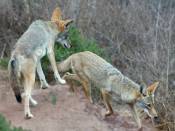
-
Sis passes right under Dad’s nose to get to her brother
-

-
Brother and Sister exchange nose touches
-

-
Dad attempts following her but stops short as she reaches her brother
-

-
they exchange body rubs
-

-
they exchange grooming
-

-
Sis then puts paws on brother’s back
-

-
Sister drapes herself over her brother
Sis, who had been standing far beyond Dad, looked back to see her brother sitting beyond Dad, and came running over to him joyfully to greet him. She brushed right past Dad, straight toward her brother and these siblings engaged in a long greeting, body contact, nose and paw touches and finally grooming. Dad looked on and did nothing. Sis wasn’t taking sides, she was just being “Sis in the middle.”
-

-
Sis runs towards Dad
-

-
Sis looks back, inviting brother along
-

-
Sis grooms Dad to reconfirm her bond to him
-

-
Young male keeps his distance, but comes along on the trek
When the warm sibling greetings were over, Sis ran to catch up with Dad, looking back invitingly for her brother to come along. She loves her father as she does her brother. She approached Dad and engaged in grooming him while he looked back over his shoulder, glaringly at the younger male, his son: “do not come”. But the male youngster did come, with Sis encouraging him. Sis no doubt sensed the tremendous tension between the males in her family probably without comprehending any of it, and so, possibly in an attempt to dissipate it, she dashed off as if in hot pursuit of prey, enticing the others to join her and in the process to forget their strife. It kind of worked because they now were concentrating on other things, on hunting in the forest.
Then, sirens sounded and they all howled together — was the spat over? I don’t think so. Dad then walked on, all alone, without being joined by either of the two youngsters. That is the last I saw of him that evening. Had he lost the skirmish? Even if he had, he won’t loose the battle — he’s a five year old mature male, and his son is just a 16 month old ingenue.
-

-
Dad takes off alone
-

-
Sis watches Dad leave without joining him
-

-
Young male looks around — can’t seem to find Sis
-

-
Sister reaches brother, they greet and she again puts her paws on him, and they go off into the dusk where I can no longer see them
Sis went off hunting, and young male was left standing on a path looking for her. Not being able to locate her, he headed off in a direction opposite from the one his father took, looking dejected as revealed by his slow pace and lowered head. But Sis must have had her brother in mind. She picked up his scent and caught up with him. There was warm body contact, nose touches and wiggles, and Sis put her paws on his back again — was she showing who was boss? Or was this just her way of showing affection — this last is what appears to be the case. It now was dark so I had to leave. I had witnessed an episode of a dispersion process, where a parent forces out a youngster from his territory.
Young Male will eventually have to leave. But I wondered if Sis would stay on the territory with Dad, or if she would go with her brother? I wondered if Dad’s attacking the male youngster would in fact have repercussions of driving out Sis as well. I’ve already seen where both youngsters now flinch in anticipation of Dad’s antagonism: the young male from being on the receiving end and Sis from simply observing it.
This dispersion process has been going on for some time — it’s recently reached a crescendo. I’ll post if things change.




























